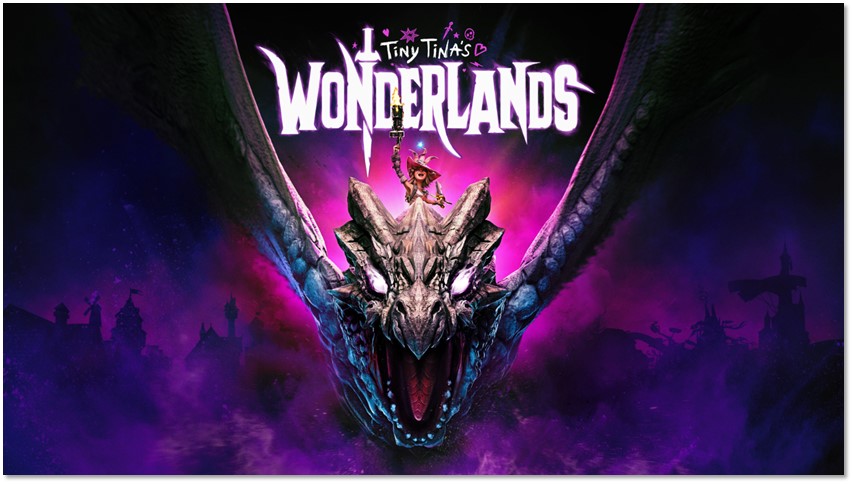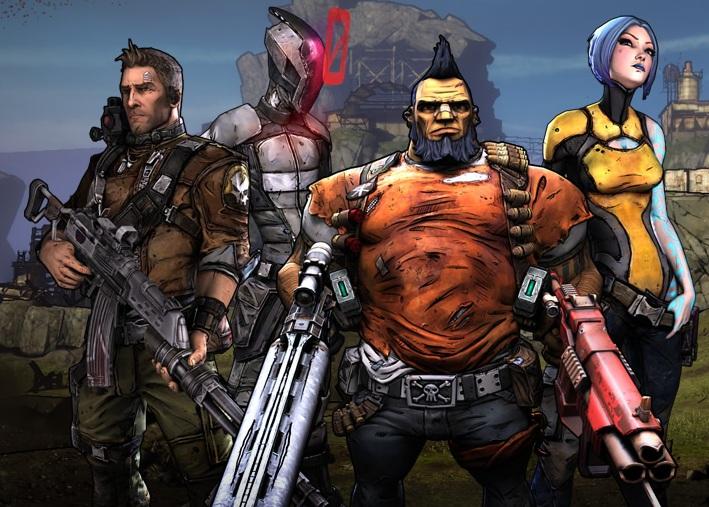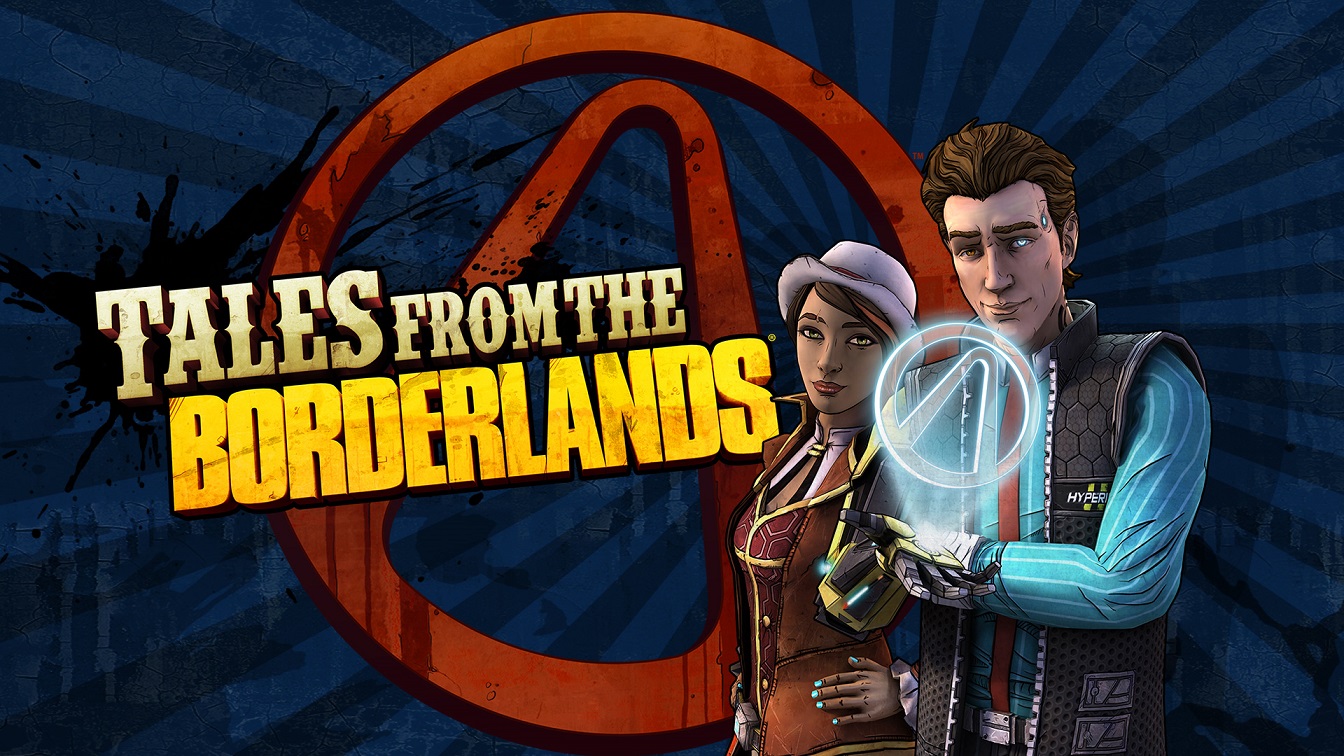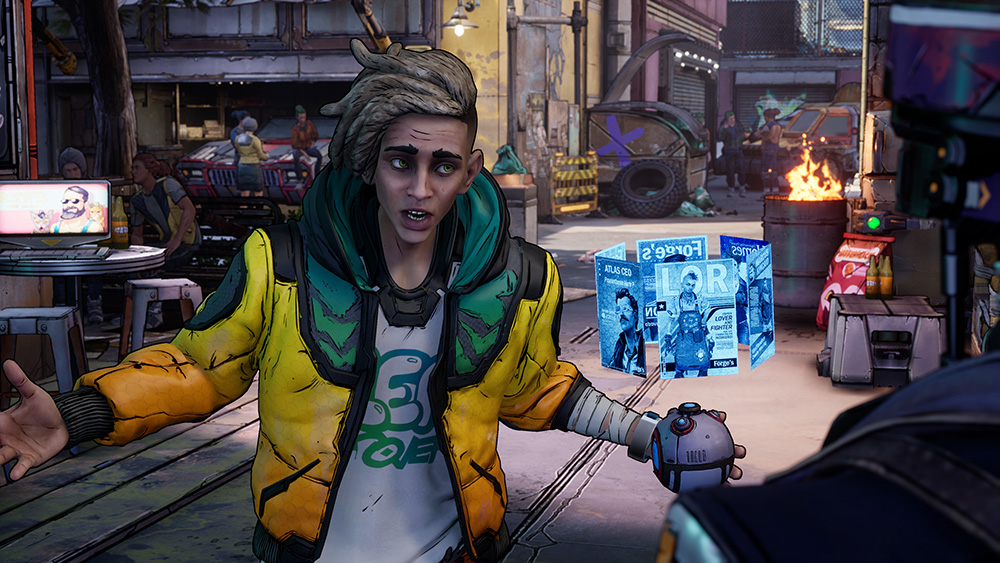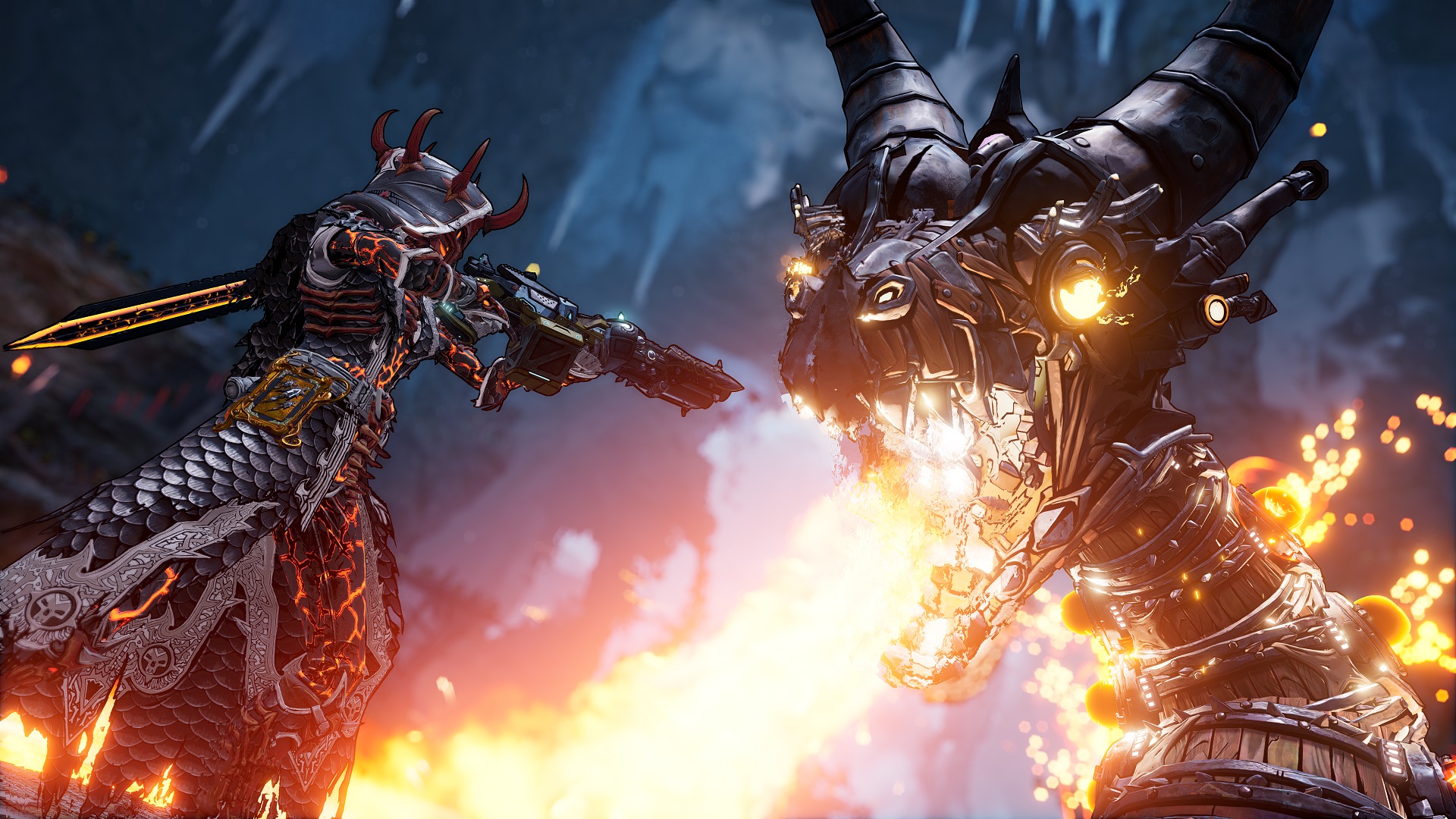
Nowadays it’s nearly impossible to not be familiar with the Borderlands series. Whether you’re one of the series millions of players or not, you’ve likely heard of it. After 4 games, plenty of DLC and a spin-off Telltale game, it’s finally time for Gearbox to try something new with the IP again, Tiny Tina’s Wonderlands. After spending some time with a few quests and couple of characters, I’d say I’ve gotten a good feel for the game.
If you played Borderlands 2 you likely know all about Tiny Tina already. A foul mouthed and too energetic kid played by Ashley Burch, she was the focus of her own DLC expansion. Playing on Dungeons and Dragons, Tiny Tina’s Assault on Dragon Keep brought some fantasy elements to the Borderlands experience. It was cool at the time to see something different from the sci-fi of the rest of the series, but it was quickly dropped after that DLC.
Now, going on 9 years later, Tiny Tina is back again for another Dungeon and Dragons-esque adventure. Slotting into her role as narrator, you’ll instead play as one of a selection of characters. In the build I played, I had access to both the Graveborn, a death-touched acolyte who sacrifices health to unleash attacks, and the Stabbomancer, a sneaky, critical-hit-focused assassin. Both classes came with their own focus and way of dealing damage, but it was the Stabbomancer that I had my most fun with. Summoning a massive spinning blade that repeatedly damaged enemy and can be repositioned with the push of a button certainly hit the spot for me.
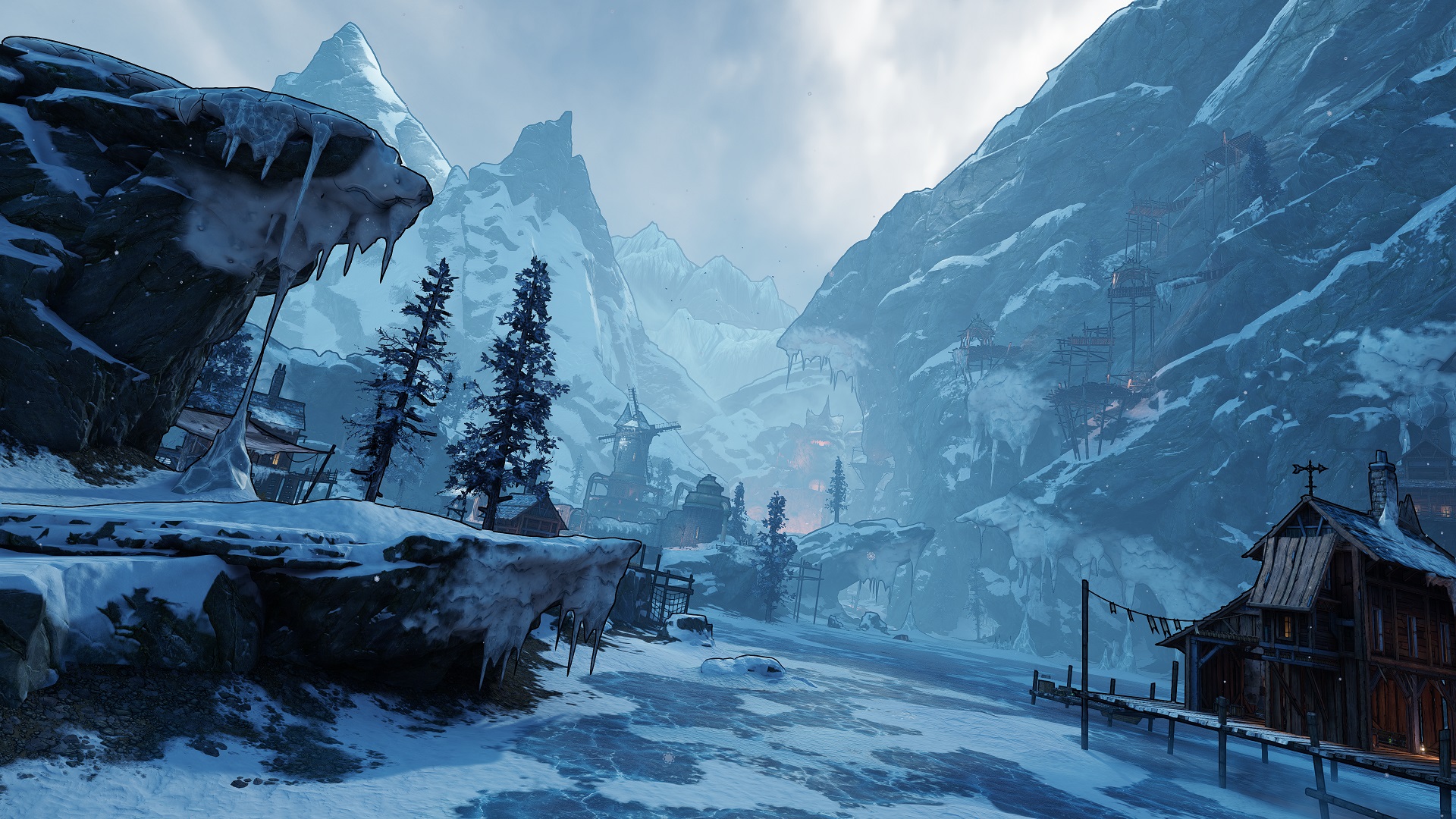
Now, you might be asking yourself, how is Tiny Tina’s Wonderland different from Borderlands? Honestly, it’a barely different at all. Instead of scabs, you’ll fight goblins; as opposed to exploring sci-fi buildings, you’ll see more fantasy based ones; and instead of grenades you’ll find different spells to hit enemies with. That’s where the differences basically end. The guns can look and feel a little more fantastical, but they’re still guns, and enemy encounters and characters still feel distinctly Borderlandsish. In fact, the first story quest I completed included an NPC that reminded me a less-annoying Claptrap. Even the environments and their assets almost look like they were ripped straight from Borderlands.
With all that said, one of my biggest issues with Borderlands 3 was that it just felt like the same again. It didn’t move enough away from Borderlands 2 to few new or fresh, despite the 7 year gap between the games. Despite the similarities, there was enough different in Tiny Tina’s Wonderlands that what I played did feel new and fresh. It was probably the enemies that aided that feeling the most, as I’d long begun to grow bored of dealing with the same psychos and scags over and over again. Of course, given the relatively small amount of the game played, there is still the potential for it to revert back to these same enemy types.
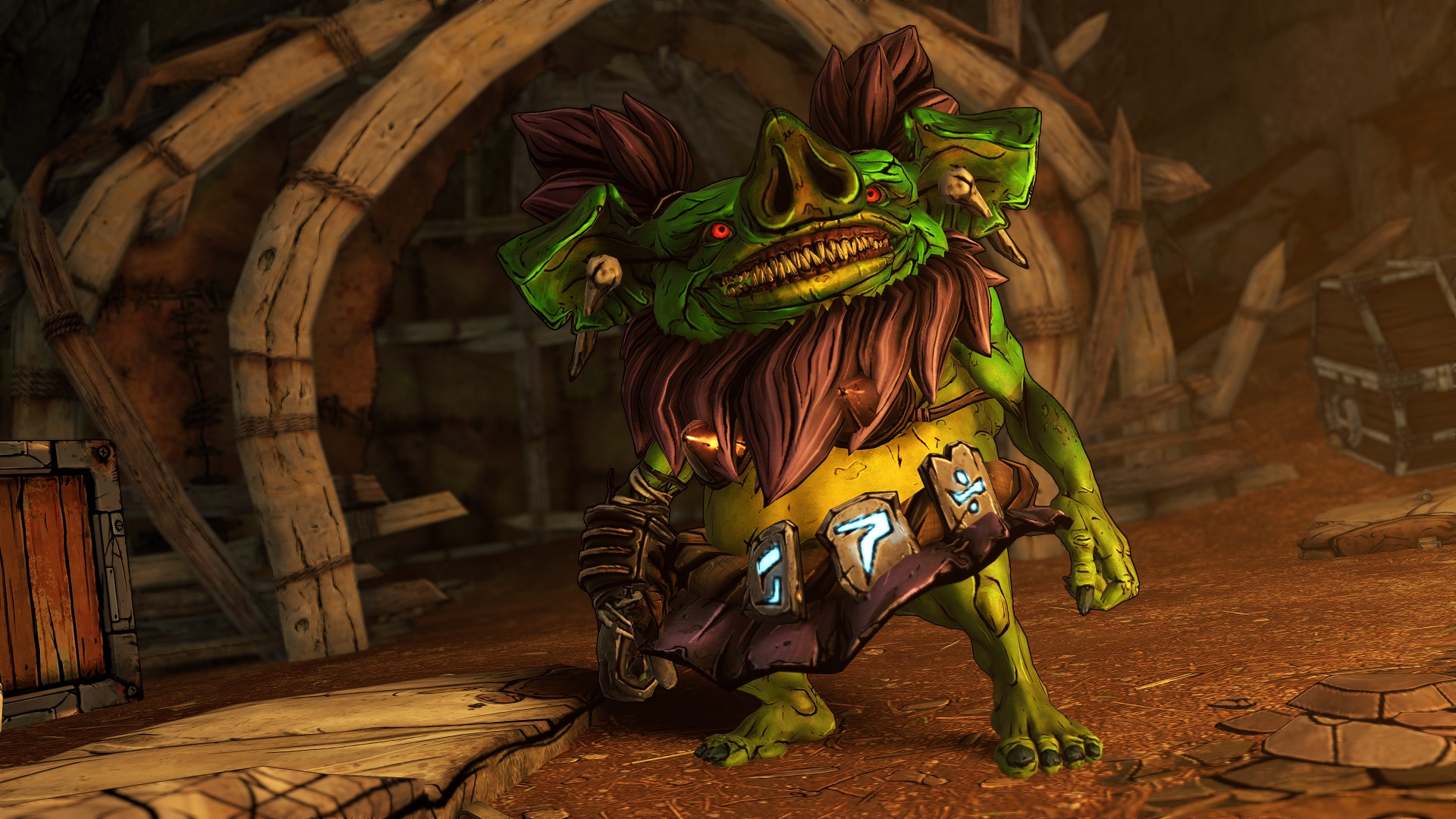
The other element I really enjoyed in this small section of Tiny Tina’s Wonderlands was its writing. With Borderlands 2 and 3, it began to feel like that old Borderlands humour of old had begun to wear a little thin. There was still the same style of slapstick, double entendres and puns, but they were slightly less in your face. It brought a bit more balance than in the past, while the occasional narrative interjection from Tina and her players helped keep things lively.
Overall, my time with Tiny Tina’s Wonderlands has me cautiously optimistic for the full release. It seems like the new coat of paint brings a sense of freshness that was lacking with Borderlands 3. With that said, if you weren’t a fan a Borderlands in the past, it doesn’t yet look like there’s enough different here to sway you.

